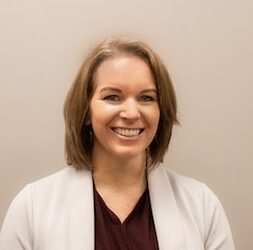Published on on April 5, 2020 by the Times Record
Written by Samantha Rhodes
The creative fields surrounding the arts, whether visual or performance, impact not only dedicated collectors and admirers but the larger community as well. If one reads novels or watches television, you can thank an artist for that idea or vision. Much of our daily lives would be greatly changed if artists were not in the world. Aside from the obvious reach the arts have into the lives of people, even more can be said for how the visual arts affect other professions.
One professional area that reaches each member of the community is the medical field. Medical students are put through rigorous study to provide care for members of their community and regions. Often, when there is exceptional medical care and opportunity, people can dedicate their time to their various professions, interests and hobbies.
Dr. Elizabeth McClain, the vice provost and associate vice president of academic affairs with Arkansas Colleges of Health Education, has been instrumental in shedding light on the importance of art in the lives of students in the medical field. Currently, Dr. McClain’s research focuses on the effectiveness of Visual Thinking Strategy and how it inspires creative problem-solving when it comes to communication and diagnosing patients. “The structure of Visual Thinking Strategy, or VTS, begins with what you see, often works of art with medical iconography, fostering open-ended questions and diagnosing medical issues seen within the image.” VTS allows the students to see artistic images and deeply engage in clinical observations.
Patient care, according to McClain, will significantly benefit from VTS as the students will approach medical problems and issues creatively, particularly when communicating with their patients. “The students will begin to approach creative problem-solving in a more holistic, patient-centered manner, allowing effective communication and comfort where the patient can feel more open to sharing various issues.” Medical professionals are trained to analyze symptoms and relate them to an underlying issue, which is why they rely on patient information; but through VTS, Dr. McClain is hoping to pave the way in creative thinking by relating symptoms and issues to that of the larger picture, something they will learn from studying artistic images.
McClain’s research interests also consider the overall wellness of the students through creative engagements by providing regular opportunities for them to spend time in creative activities, thereby relieving stress. “One of the areas we are looking into is just looking at art after participating in an exam, and if the act of looking will significantly reduce cortisol levels and heart rate more quickly and effectively.”

